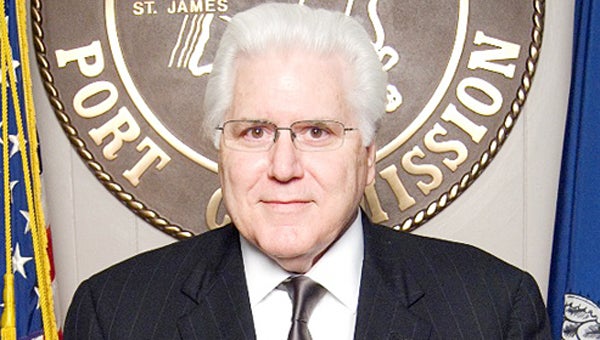Aucoin: Historic river levels impact region
Published 12:00 am Wednesday, October 2, 2019

- Paul Aucoin is the executive director of the Port of South Louisiana.
2019 has been a historic year for the Port of South Louisiana. For more than 200 days, the Mississippi River was heavily affected by winter precipitation, heavy rainfall, and subsequent flooding in the Tennessee, Cumberland, Ohio, and Yazoo River basins. This strain on the Mississippi River System led to a major increase in the river levels. In Louisiana, the Bonnet Carré Spillway was opened twice in the same year, for the first time in its history, to manage the massive waters down river. The Mississippi River High Water Event of 2019 has broken records set in 1927 and 1973, previously the years of the most destructive and second most destructive river floods in the history of the United States, respectively.
According to the National Oceanic and Atmospheric Administration, the first half of this year ranked among the 10 wettest six-month periods on record. Record rainfalls combined with precipitation from northern winter weather caused the Mississippi River’s waters to rise above standard flood levels along its banks, including above 44.18 feet in Baton Rouge and 48.0 feet at Red River Landing in Pointe Coupee Parish. These high levels led to the closure of the Upper Mississippi River – passage under bridges in Tennessee, Mississippi, and Baton Rouge restricted to daylight hours only – and up to 72 hour delays in river traffic along the Lower Mississippi River and the Gulf Coast.
The impact on our region has been tremendous. As a result of the restrictions and crowded cargo congestion along the Mississippi, at one point during the High Water Event, 27 cargo ships had to be parked in a queue at the mouth of the river. Normally, only three to five ships have to wait for clearance. Additionally, according to Coast Guard regulations, the higher the river level, the fewer barges allowed per towboat. Because of this, many corporations engaging in cargo traffic were forced to stall their barges and ships due to the bottlenecked conditions. The water level increase also led to the closure of many railways and highways along the river, which in turn kept much needed supplies from farmers, such as fertilizer delivered from barges. Many farm fields were flooded as well, devastating local economies. The consequences of the High Water Event will ultimately result in smaller crops being produced and sent to market; for instance, only 30 percent of the U.S. corn crop was seeded by May in an estimate conducted by the U.S. Department of Agriculture. This percentage is well below the normal rate of 66 percent seeded in May. As of press time, the total economic impact of the High Water Event and its effects was not known; however, the Insurance Information Institute based in New York estimated in May that the damages already exceeded $3 billion.
In August, the U.S. Army Corps of Engineers (USACE) reported the dropping of the Mississippi River below flood levels at various gauges along its path, including markers in Memphis, Cairo, Illinois, and St. Louis. Plans are underway to improve the condition of the river and the facilities alongside it. Upgrading locks and dams along the Mississippi are set to take place, thanks to the recent appropriation of funds by Congress. USACE’s New Orleans office is conducting studies of the river’s changing dynamics around the Old River Control Structure in Vidalia, LA, and Morganza Spillway in Batchelor, LA. Before the waters rose, the barge industry was enjoying the profits from the recovery of the inland market; it is certain these benefits will return due to supply and demand. Thanks to the recent increases in oil and gas production, barge utilization is needed more than ever and is sure to return to standard operational levels as the river levels continue to decrease. Sediment buildup and dredging the Mississippi River Ship Channel from Baton Rouge to the Gulf of Mexico has to be addressed and handled as well. Additionally, the Port of South Louisiana and the River Region were largely spared any long-term setbacks or damages. I am confident our industry will be better than ever before thanks to these new improvements and upgrades.
The Mississippi River High Water Event of 2019 was the most unprecedented U.S. maritime occurrence to date. There have been plenty of lessons learned from this event; let us hope we can grow and continue to protect the river to ensure an anomaly of this kind never occurs again.
Paul Aucoin is executive director of the Port of South Louisiana. For more information, call 985-652-9278.




